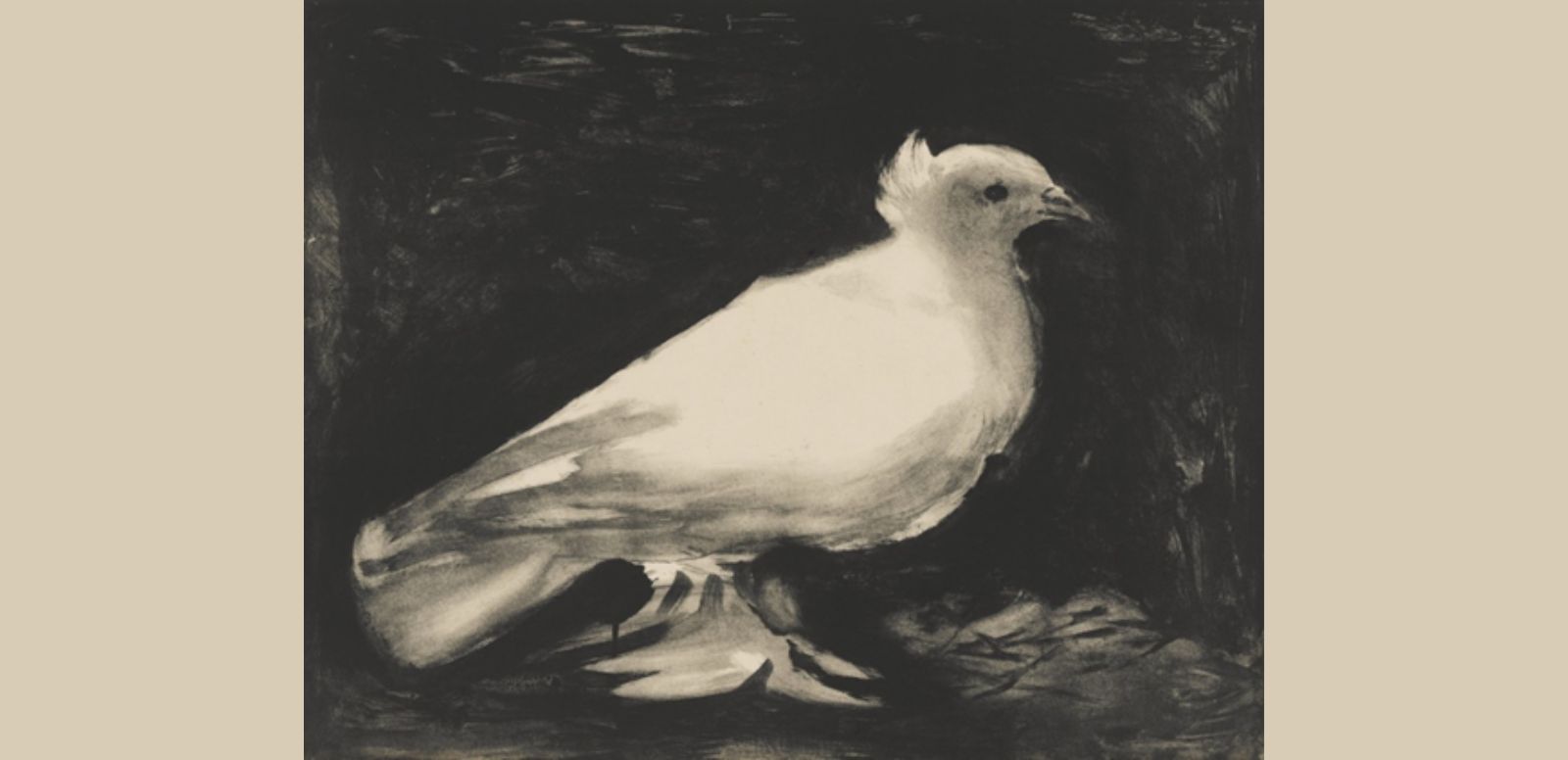
Tate Museum
© Sucesión Picasso, VEGAP, Madrid, 2024
Pablo Picasso's Paloma (Dove), painted on January 9, 1949, stands out as a symbol of peace within the artist's vast production. This simple but striking composition presents a white dove, a recognized symbol of peace, on a black background, masterfully executed with a lithographic ink wash technique, which also manages to highlight the softness of the dove's feathers.
In the background of the creation of this work in 1949, is the impact of the Spanish Civil War and the Second World War on Picasso's life. The work was created in the context of the World Congress of Supporters of Peace in Paris, and its impact went beyond the canvas. The piece was selected to illustrate the poster for the congress, thus becoming the emblem of these gatherings that advocated for a world free of conflict.
Picasso's personal connection to the dove is deepened by the birth of one of his daughters, whom they named Paloma, just before the opening of the Congress. This element adds an intimate, familial dimension to the work, revealing the duality of meaning that Picasso was capable of capturing in his creations.
A year later, at the Peace Congress in Sheffield (England) in 1950, Picasso delivered a short speech in which he shared how his father taught him to paint doves and concluded, "I stand for life against death; I stand for peace against war." These words encapsulate the essence of Paloma (Dove) (1949) and Picasso's deep commitment to humanity and peace.
Sources:
Ficha de la obra, Tate Museum: https://www.tate.org.uk/art/artworks/picasso-dove-p1136

